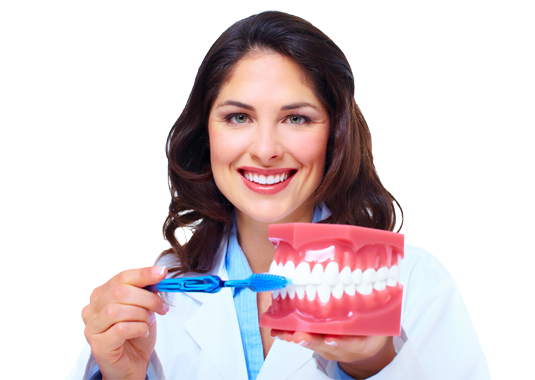What is tooth bleaching?
Tooth bleaching, also known as tooth whitening, is a common procedure of cosmetic dentistry. Is simply a way of lightening your teeth, without removing any layers from your teeth’s surface enamel. It works with your existing colouring to give you a natural bright, white smile!
Many people consider white teeth to be an attractive feature of a smile. A child’s deciduous teeth are generally whiter than the adult teeth that follow. As a person ages the adult teeth often become darker. This darkening is due to changes in the mineral structure of the tooth, as the enamel becomes less porous. Teeth can also become stained by bacterial pigments, foodstuffs and tobacco.
Methods of bleaching
A dentist applies a high concentration of oxidising agent for a short period of time, which produces quick results. In order to reduce the risk of chemical burns to the soft tissues, most in-office bleaching procedures use a light-cured protective layer that is carefully painted on the gums and papilla (the tips of the gums between the teeth). The bleaching agent is either carbamide peroxide, which breaks down in the mouth to form hydrogen peroxide, or hydrogen peroxide itself. The bleaching gel typically contains up to 35% carbamide peroxide which is roughly equivalent to a 12% hydrogen peroxide concentration.
A typical course of bleaching can produce dramatic improvements in the cosmetic appearance of most stained teeth; however, some stains do not respond to bleaching.
Tetracycline staining may require prolonged bleaching, as it takes longer for the bleach to reach the dentine layer.
Bleaching is least effective if teeth have white spots, decay or infected gums.

